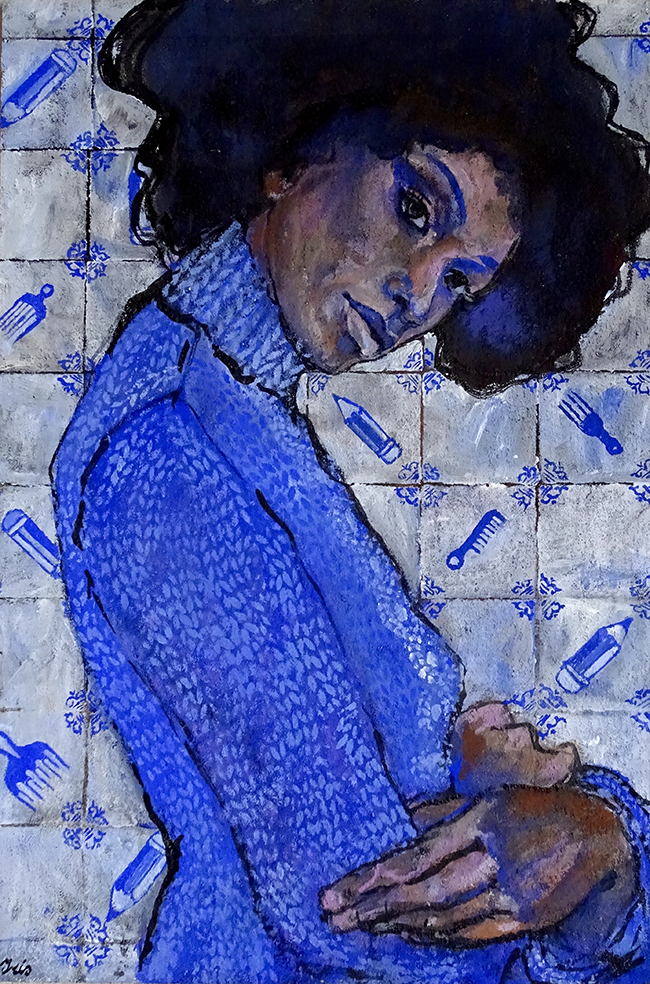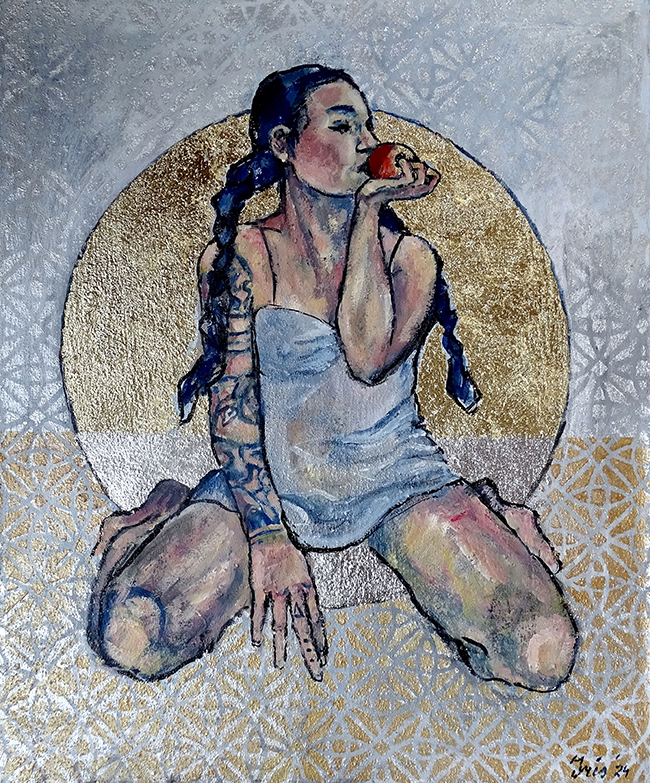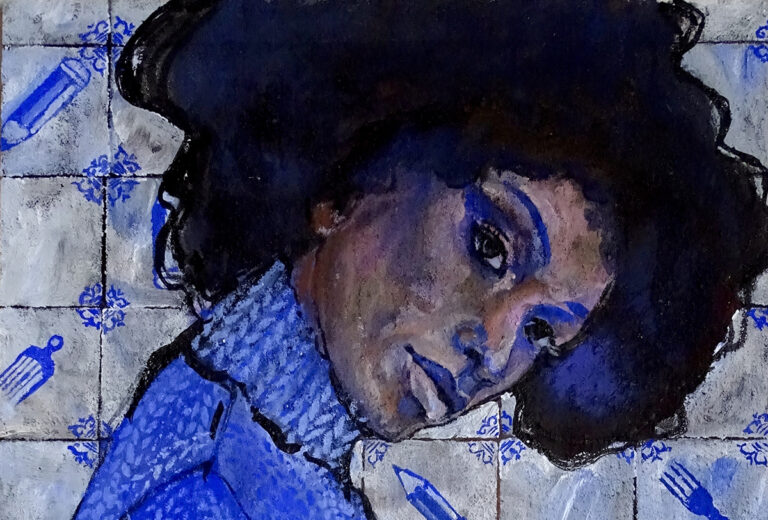Born in 1971, Iris van Zanten has always pursued what lies beneath the surface of an image. She graduated from the Academy of Visual Arts in Amsterdam in 1996 and later completed a Master’s degree in Art History at the Vrije Universiteit. Her education gave her two perspectives: the practical knowledge of making and the critical lens of history. Together they shaped an approach that is both technical and reflective.
At the heart of her practice is the search for essence—how to use the fewest gestures or materials to convey a story. She often turns to subjects that have lived long lives in art: myths, Biblical tales, symbolic narratives. Instead of repeating them, she tries to find a fresh angle. To achieve the softness she wants, she devised her own surface preparation using sand, bone glue, and Van Dyck Brown. On these grounds she layers pigments, ink, and acrylic, producing paintings with the faded depth of a fresco yet alive with contemporary energy.
Combs and Pencils

In Combs and Pencils, van Zanten addresses a chilling historical practice. Under apartheid in South Africa, officials used the comb or pencil test to categorize people by race. A pencil was pushed through the hair. If it slid through, the subject might be called “white.” If it caught, the person could be classified as “colored” or “black.” This simple act carried enormous consequences, determining access to rights, land, education, and movement.
Van Zanten’s painting doesn’t illustrate the test directly. Instead, it captures the cruelty embedded in it. Working with pigment, ink, and acrylic on wood, she emphasizes hardness and resistance. Wood, with its solidity, mirrors the cold rigidity of the classification system itself. The layered surfaces are rough, recalling both the texture of hair and the scar tissue of history.
The piece avoids sensationalism. Rather, it points to how something as intimate as the act of combing—normally private and ordinary—was weaponized into a tool of exclusion. The repetition of lines and her signature prepared surface create a push and pull: softness meeting bluntness, humanity meeting bureaucracy. In those tensions, the painting asks us to reckon with the violence woven into everyday acts.
Be Careful What You Wish For

Another painting, Be Careful What You Wish For, draws from myth. The legend of King Midas is well known: his wish for a golden touch becomes a curse when food and loved ones transform into untouchable metal.
Van Zanten interprets the story using pigments, ink, acrylic, and the brilliance of goldleaf and silverleaf. The materials are not incidental—the gleam of the metallic surface seduces, just as Midas was seduced by wealth. But the shine is also deceptive. Within it lies emptiness, an image of beauty masking loss.
She introduces a woman holding an apple, an echo not only of Midas but also of biblical temptation. The apple glows against the metallic field, a small gesture charged with consequence. At first glance the work dazzles, but as the eye lingers the shimmer isolates, pulling attention to the fragility of what is being consumed. Desire, once fulfilled, leaves absence.
Between History and Myth
Placed side by side, these two works demonstrate the breadth of van Zanten’s concerns. One reaches into history, examining the ways classification systems brutalized ordinary lives. The other reworks a myth that has been told across centuries, showing how greed and longing can empty life of joy. Both are held together by her material language—the prepared surfaces of sand, glue, and Van Dyck Brown that anchor pigment and ink with weight and memory.
What links her practice is not subject alone but an insistence on essence. She pares down imagery to what matters most: a line, a gesture, a surface, a shimmer. Her paintings carry restraint, yet within that restraint lies resonance.
They hold contradiction. They are both soft and dense, radiant and troubling, historical and timeless. Van Zanten uses her materials not only to paint but to let stories breathe differently. The result is art that asks us to pause—not to consume quickly, but to dwell in the tension between beauty and consequence, cruelty and memory.

